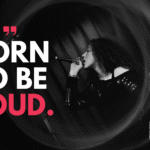Now Reading: How Royalties Work in The Music Industry: The Complete Breakdown
-
01
How Royalties Work in The Music Industry: The Complete Breakdown
How Royalties Work in The Music Industry: The Complete Breakdown

Article by Manuela Bittencourt – 08/05/2025
Whether you’re an artist, songwriter, manager, or just music-curious, understanding royalties is essential in today’s music economy. Royalties fuel the business — and your income. But with so many types (mechanical performance, neighbouring, sync), layers (labels, publishers, unions), and platforms (streaming, radio, film), it’s easy to get lost.
This article breaks it all down.
What are Music Royalties?
Music royalties are payments made to rights holders (artists, songwriters, producers, labels, publishers) when music is used. Usage could be on a stream on Spotify, a vinyl purchase, background music in a Netflix series, or even a live performance in a park.
The Core Types of Royalties
- Mechanical Royalties
- Paid when music is reproduced (CDs, downloads, streams).
- Collected by The MLC in the U.S. for digital streaming.
- Applies to songwriters and publishers.
- Internationally, mechanical royalties are collected by different organizations. For example:
- Who Pays Outside the U.S.?
- Platforms like Spotify and Apple Music pay local mechanical rights organizations:
- MCPS (UK)
- GEMA (Germany)
- UBC (Brazil)
- These organizations then pay publishers or administrators just like The MLC does in the U.S.
- Platforms like Spotify and Apple Music pay local mechanical rights organizations:
- Who Pays Outside the U.S.?
Extra note: In many countries, performance and mechanical royalties are often bundled together, making it important to register with multiple organizations (or use a global publisher/admin like Songtrust).
- Performance Royalties
- Paid when music is publicly performed (radio concerts, restaurants, streaming).
- Collected by PROs (Performance Rights Organizations):
- US: ASCAP, BMI, SESAC, GMR
- Brazil: ECAD
- Also includes radio, TV, bars, clubs, etc.
- Who Pays?
- Radio and TV stations pay blanket fees to performance rights organizations (PROs) like ASCAP, BMI, or ECAD in Brazil.
Live venues and businesses (cafes, clubs, malls) also pay license fees to PROs. - Streaming platforms pay directly to PROs for each stream, which is counted as a public performance.
- Radio and TV stations pay blanket fees to performance rights organizations (PROs) like ASCAP, BMI, or ECAD in Brazil.
- Who Gets Paid?
- The songwriter and the publisher get paid by the PRO.
- If you are both (as many indie artists are), you’ll get both shares.
Beginner tip: Even if you’re an artist performing your own music live, unless you’re registered with a PRO and reporting your setlists, you may be missing out on royalties.
- Sync Royalties
- Paid when music is synced to visual media: film, TV, ads, video games.
- Negotiated upfront; no statutory rate.
- Includes two licenses:
- Sync license (to publisher/songwriter)
- Master use license (to label/artist)
- Neighbouring Rights Royalties
- Paid to recording artists and master owners when recordings are publicly performed (esp. outside the U.S.)
- The U.S does not pay neighbouring rights for terrestrial radio.
- Collected by organizations like:
- SoundExchange (U.S. for digital)
- PPL (UK)
- SIMPALA (Brazil)
Artist Royalties (aka Record Royalties)
When you’re signed to a label, you earn royalties based on revenue generated by your master recordings. These artist royalties are paid by the record label to the artist under their deal.
Calculated Using:
- Royalty Rate: (% of net revenue or PPD)
- Deductions: packaging, reserves, international discounts
- Recoupment: label first recovers any advances or costs (recording, marketing, tour support)
Example:
- Album earns $100,000 gross.
- Label recoups 40,000 advance.
- Artist has 15% royalty rate —> $15,000
- Artist only gets paid once the $40k is recouped.
How Labels Handle Royalty Deductions
Royalties are not always based on full retail price. They’re often reduced by configuration discounts, territory discounts, and deductions like:
- Packaging costs
- Territory reductions (ex: Latin America @ 50%)
- Digital configuration discounts (streaming = lower rate than CDs)
- Breakage allocation (see below)
Breakage: What Happens to DSP Overpayments
When streaming platforms overpay labels (minimum guarantees, advances), any money not tied to specific recordings is called breakage.
How It’s Handled:
- Labels now typically share breakage with artists.
- Leftover money is allocated proportionally across all recordings and noted as “Breakage” on royalty statements.
Label Royalty Obligations: Who Gets Paid?
Labels don’t just pay artists. They also pay other royalty stakeholders:
Artist Royalties
- Paid to recording artists, producers, featured artists, remixers, sample owners
- Most majors use online portals (e.g., Sony Music Portal)
When Labels Pay the Publisher Directly
In some record deals (especially major label ones), the label pays the songwriter’s publisher directly fpr the mechanical royalties instead of having the platform do it.
- This is done through mechanical licensing agencies like Harry Fox Agency (HFA) in the U.S.
- Labels might then deduct that payment from the artist’s royalty account — meaning the artist is still paying for it, just indirectly.
Example:
The label licenses your song from your publisher (or from HFA), pays them the mechanical royalty, and then deducts that same amount from your earnings.
For DIY Artists – Who Pays You?
If you’re an independent artist who writes and records your music, you might own both the master and publishing rights. That means you can collect all the royalty types — but you’ll need to set up the right tools.
Here’s who pays you in that case:
| Royalty Type | Paid By | How You Collect It |
| Artist Royalties (Masters) | Spotify, Apple, etc. | Through your distributor (e.g. DistroKid, Tunecore) |
| Mechanical Royalties | DSPs (via The MLC, U.S.) | Register with The MLC |
| Performance Royalties | Streaming/radio/venues | Register with ASCAP, BMI, or your PRO |
| Sync Royalties | Film/TV company, YouTube | License directly or use a sync agent |
| Neighboring Rights | Foreign broadcasters, etc. | Use SoundExchange, PPL, or a rep service |
Pro Tip or Beginners: Indie artists often miss royalties simply by not registering with all the necessary organizations. If you’re releasing music globally, use an admin like Songtrust to collect international royalties you can’t reach on your own.
Publishing Royalties
- For audio: Paid to publishers or HFA (Harry Fox Agency)
- For video: Paid directly to publishers
- For video streams, DSPs may handle payments unless it’s a lyric video, which majors may pay directly.
Union Royalties
- Only if the label has a CBA (collective bargaining agreement) with unions.
- Includes contributions to:
- AFM Special Payments Fund – for active union members over last 5 years
- AFM Music Performance Fund – funds free live music (e.g., orchestras in parks)
- SAG-AFTRA Sound Recordings Distribution Fund – paid to vocalists/members working on the recording
SoundExchange: Royalties for Non-Interactive Streaming
SoundExchange is a U.S.-based nonprofit that collects royalties for digital radio (e.g., Pandora, SiriusXM).
Royalties Breakdown:
- 45% → Featured Artists (includes producers/remixers via LOD)
- 50% → Sound Recording Owner (usually the label)
- 5% → Non-featured performers (via AFM & SAG-AFTRA’s IPRD fund)
Key Notes:
- Artists don’t need to be union members to collect from the IPRD fund.
- Operates under U.S. Copyright Law Sections 112 and 114
- Charges ~5% admin fee
Ephemeral Royalties
These are royalties for temporary copies made by streaming services to enable playback (aka buffer copies).
- Paid to labels, who must then pay artists.
- Small % compared to other royalties.
Other International + Special Royalties
International:
- Home Recording Act Royalties (AHRA): blank CD/media tax
- Japan Rental Royalties: for music rentals
- Spain/Germany TV Royalties: for use of sound recordings on TV
Symphonic:
- SoundExchange pays directly to orchestras and choirs via specific funds, not always individual members.
- Example: New York Philharmonic —> fund payout.
Digital Royalties by Usage Type
| Use Type | Royalties Created | Paid To |
| Interactive Streams | Performance, Mechanical, Master | PROs, MLC, Labels/Artists |
| Permanent Downloads | Mechanical, Master | MLC, Labels/Artists |
| Non-Interactive Streams | Performance (via SoundExchange), Master | PROs, Labels/Artists/Unions |
Artists Selling or Borrowing Against Royalties
What artists can sell:
- Copyright in recordings — only if they own them (rare)
- Right to receive royalties — can be sold for a lump sum
Borrowing Against Royalties:
- Artists can borrow money now based on predictable incoming royalties.
- It’s like a cash advance against future income.
- Common with companies like Sound Royalties or RoyFi.
Deal Terms Vary:
- Depending on royalty history and predictability.
- Essentially a loan with interest repaid via royalty earnings.
Other Royalty Related Terms to Know
Publishing Royalties
- Refers to all royalties owed to songwriters and publishers (mechanical + performance + sync)
- Often managed by publishing admin companies (like Songtrust, Kobalt).
Neighbouring Rights
- Refers to performance of sound recordings
- Most common outside the U.S.
- Artists must often register separately in each territory (PPL, ADAMI, etc.)
Reading Royalty Statements
Labels and publishers issue royalty statements quarterly or semi-annually. These include:
- Units sold/streams
- Revenue by territory and format
- Deductions (e.g., reserves, foreign reductions)
- Net royalties earned and paid
- Special items like Breakage, Streaming Bonuses, or Advances Recouped
Understanding your statements means understanding how much you’ve earned, from where, and why.
Final Thoughts
Royalties are the lifeblood of an artist’s financial life — but they’re complex. To build a sustainable career, you must understand what you’re owed, who’s paying it, and how to collect.
This article gives you the map — now you just have to follow the money.






















